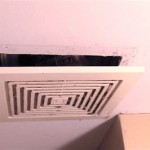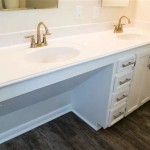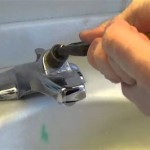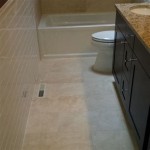Hide Pipes Under Bathroom Sink Drains: Aesthetic Solutions and Practical Considerations
Exposed pipes beneath a bathroom sink can detract from the overall aesthetic of the space. While functionality is paramount, hiding these pipes can significantly enhance the visual appeal of a bathroom, creating a more polished and sophisticated environment. This objective can be achieved through a variety of methods, each with its own set of advantages, disadvantages, and suitability depending on the existing plumbing, budget, and desired outcome. This article explores several strategies for concealing under-sink pipes, considering both aesthetic considerations and practical implications.
Addressing exposed pipes is often a key element in bathroom renovations or even simple cosmetic updates. Many homeowners find that the visible pipes, particularly those that have aged or become discolored, create an unwanted distraction. Choosing the right method for hiding these pipes requires careful planning and an understanding of the available options, ensuring that the solution is not only visually appealing but also allows for easy access to the plumbing when necessary for maintenance or repairs.
Cabinetry and Vanities for Pipe Concealment
The most common and often most effective way to hide pipes under a bathroom sink is through the use of cabinetry or a vanity. A vanity, in its simplest form, is a piece of furniture designed to house the sink and provide storage. The cabinet structure inherently conceals the plumbing beneath, creating a clean and organized appearance. Vanities are available in a wide range of styles, sizes, and materials, allowing homeowners to select an option that complements the overall bathroom design.
When selecting a vanity, it is crucial to consider the existing plumbing configuration. The vanity's design should accommodate the drainpipe, supply lines, and any other related plumbing components without requiring extensive modifications. Many vanities are specifically designed with cutouts or adjustable shelves to facilitate pipe placement. If necessary, modifications can be made to the cabinet itself, such as creating larger openings or adjusting shelf heights, to ensure a proper fit. However, it is important to exercise caution when modifying cabinetry, as structural integrity can be compromised if not done correctly.
Floating vanities, which are mounted to the wall without legs, offer a modern and minimalist aesthetic. While they provide some visual space underneath, the cabinet still effectively hides the majority of the plumbing. When installing a floating vanity, it is essential to ensure that the wall is adequately reinforced to support the weight of the vanity, sink, and any items stored within. Careful planning is required to route the plumbing within the wall cavity to maintain the floating appearance.
For existing pedestal sinks or wall-mounted sinks where replacing the fixture isn't desired, adding a decorative cabinet skirt or a freestanding cabinet around the sink can provide a similar concealing effect. These standalone options offer a less permanent solution than a full vanity replacement and can be easily removed for access to the plumbing.
Pipe Covers and Decorative Sleeves
Another approach to hiding pipes is to use pipe covers or decorative sleeves. These products are designed to encase the exposed pipes, providing a more aesthetically pleasing appearance without requiring major renovations. Pipe covers are typically made of materials such as plastic, metal, or wood and come in a variety of finishes to match the bathroom décor.
One advantage of pipe covers is their ease of installation. They often come in two halves that snap together around the pipe, eliminating the need for cutting or complex assembly. Decorative sleeves, on the other hand, may require some assembly but offer a more tailored look. These sleeves can be painted or stained to match the surrounding cabinetry or walls, creating a seamless integration with the bathroom design.
When selecting pipe covers, it is important to accurately measure the diameter of the pipes to ensure a proper fit. Covers that are too small will be difficult to install, while those that are too large may not provide adequate concealment. It is also important to consider the material of the pipe cover, as some materials may be more durable or resistant to moisture than others. Metal pipe covers, for example, are generally more durable than plastic covers but may be more susceptible to rust or corrosion in humid environments.
Furthermore, ensure the chosen pipe cover design allows for future access to the plumbing for maintenance or repairs. Some covers are designed with removable sections or hinges that allow access to specific areas of the pipe. This feature is particularly important for areas where leaks or clogs are more likely to occur, such as the drainpipe connection.
Creative Concealment Techniques and DIY Solutions
For homeowners seeking more unique and personalized solutions, several creative concealment techniques can be employed. These options often involve DIY projects and can be tailored to the specific aesthetic of the bathroom.
One popular technique is to create a custom-built box or enclosure around the pipes. This box can be constructed from wood, drywall, or other readily available materials and painted to match the surrounding walls. The enclosure can be designed to mimic the appearance of a piece of furniture or architectural detail, seamlessly blending into the bathroom design. When building an enclosure, it is crucial to provide easy access to the plumbing for maintenance purposes. This can be achieved by incorporating a removable panel or a hinged door into the enclosure.
Another creative approach is to use decorative elements to distract from the exposed pipes. This can involve strategically placing plants, decorative baskets, or other items in front of the pipes. The key is to create a visual focal point that draws attention away from the plumbing. However, it's important to ensure that these decorative elements do not obstruct access to the pipes in case of an emergency or require regular maintenance.
Fabric can also be used to conceal pipes, particularly in bathrooms with a more bohemian or eclectic style. A simple fabric skirt can be draped around the sink, concealing the pipes beneath. The fabric can be chosen to complement the bathroom's color scheme or to add a pop of color and pattern. When using fabric, it is important to select a material that is resistant to moisture and mildew. Additionally, the fabric should be easily removable for cleaning and maintenance purposes.
Repurposing existing materials can also lead to unique and eco-friendly solutions. For example, an old drawer or a section of a salvaged door can be transformed into a decorative cover for the pipes. With a little creativity and effort, these repurposed materials can be given a new life and add a touch of character to the bathroom.
Regardless of the chosen method, safety should always be a primary consideration. When working around plumbing, it is important to take precautions to avoid damaging the pipes or causing water damage. If unsure about any aspect of the project, consulting a qualified plumber is always recommended. A professional plumber can provide guidance on the best approach for concealing the pipes while ensuring that the plumbing system remains functional and safe.
Proper planning and execution are essential for successfully hiding pipes under a bathroom sink. By carefully considering the various options and taking into account factors such as budget, aesthetic preferences, and practical considerations, homeowners can achieve a more visually appealing and functional bathroom space.
Moreover, consider the location of shut-off valves. Ensuring easy accessibility to these valves is critical for isolating the water supply during repairs or emergencies. Concealing pipes should never compromise access to these essential components of the plumbing system.
The materials selected for concealing pipes should also be resistant to moisture and mold growth. Bathrooms are inherently humid environments, and materials that are susceptible to moisture can deteriorate over time, leading to costly repairs. Selecting materials that are specifically designed for use in bathrooms can help to prevent these problems.
Finally, remember that the goal of hiding pipes is to improve the overall aesthetic of the bathroom. The chosen method should complement the existing décor and create a cohesive and visually appealing space. By carefully considering these factors, homeowners can successfully conceal their under-sink pipes and create a more enjoyable and functional bathroom environment.

Pin On Layouts

Pin On Bathroom

How To Hide Pipes On A Small Floating Si Bunnings Work Community

How To Hide Plumbing In Your Bathroom Victoriaplum Com

Boxing In Bathroom Pipework Guru

8 Toilet Ideas Bathroom Decor Under Sink Small

How To Hide Plumbing In Your Bathroom Victoriaplum Com

P Trap Cover Ada Rejuvenation

Whats Some Ways To Cover Up My Sink Pipes Hometalk

Creative Ways To Utilise The Under Sink Areas In Your Bathroom And Kitchen Hipcouch Complete Interiors Furniture
Related Posts







